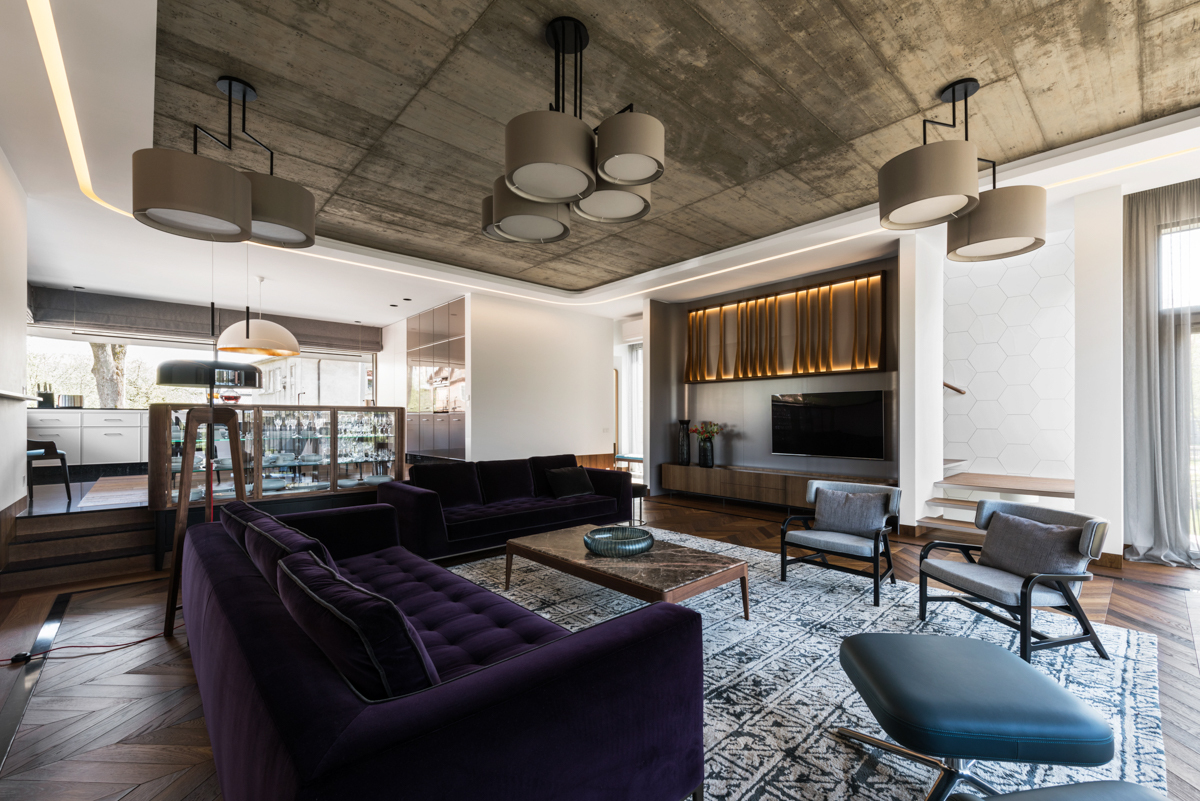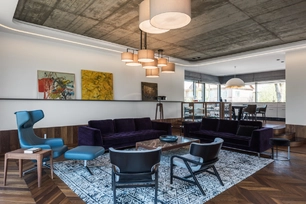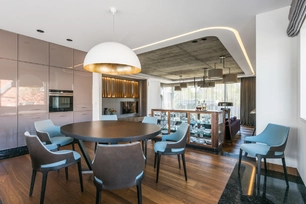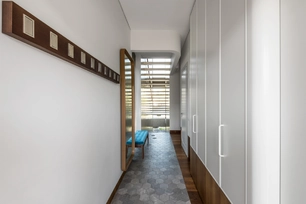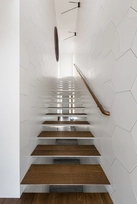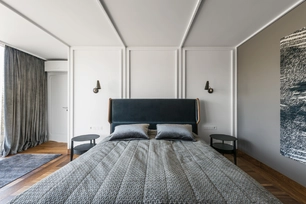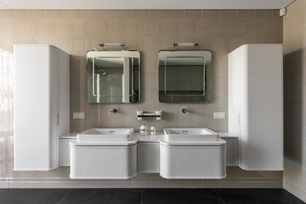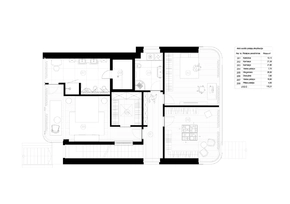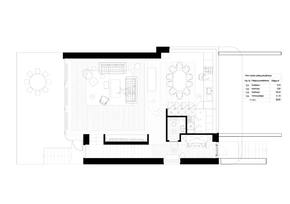Apie projektą:
Studija: „X-ARCH“
Pagrindinis autorius: Rūstenis Milaševičius
Bendraautoriai: Andrius Tebelškis, Indrė Ruminaitė – Nacevičienė
Šalis: Lietuva
Plotas: 280 m2
MR21
Išskirtinė Kauno Žaliakalnio istorinė terpė savo unikaliu charakteriu neišvengiamai išprovokuoja savitus, netikėtus sprendinius. Projektuojant namą stilistiniai art deco improvizacijos atspalviai tampa tarsi neatsiejami nuo Žaliakalnio aplinkos.
Eksterjerui būdinga stilistinė raiška lydi ir namo viduje.
Kūrybos procese sprendžiamas uždavinys suprojektuoti modernų, racionalų ir šiandienos funkcinius bei estetinius poreikius atitinkantį interjerą. Jame persipinama šiuolaikiškos medžiagos ir technologijos su improvizuotomis tarpukario laikotarpio formomis, faktūromis, spalvomis. Spalviniuose sprendiniuose – svarbiausia interjero charakteris, todėl sąmoningai atsisakoma monochromiškumo.
Vienas iš pagrindinių interjero kūrimo instrumentų – „švarus“, saikingas, istoriniam laikotarpiui būdingų formų interpretavimas, vengiant jų tiesmukiško traktavimo, žvelgiant į kūrybinį procesą iš nūdienos pozicijų.
Didelis dėmesys skirtas baldų, durų ir kitų interjero elementų projektavimui bei gamybos proceso koordinavimui. Tai neišvengiama siekiant maksimalios estetinės interjero raiškos.
English:
The exceptional historical environment of Kaunas Žaliakalnis inevitably provokes distinctive and unexpected solutions due to its unique character. Designing the house, the stylistic shades of Art Deco improvisation become as inseparable from the environment of Žaliakalnis. The exterior is characterized by stylistic expression which is extended inside the house. In The creative process, the task has been solved by designing a modern , rational and contemporary functional with aesthetic needs compatible with the interior. It combines modern materials and technologies with improvised forms of interwar period, shapes and colors. The most important character of the interior is in the colored solutions, therefore purposely the monochromaticity has been renounced. One of the main instruments used for the interior creation is the "clean", moderated forms interpretation of the historical period, avoiding their straightforward treatment, considering the creative process for the present day. A great deal of attention is devoted to the design of furniture, doors and other interior elements design and to the coordination of the production process as well. This is inevitable looking for maximum aesthetic interior resolution.
Nuotraukos: Leonas Garbačauskas
© 2024 visos teisės saugomos
Norėdami išsaugoti, prisijunkite.

